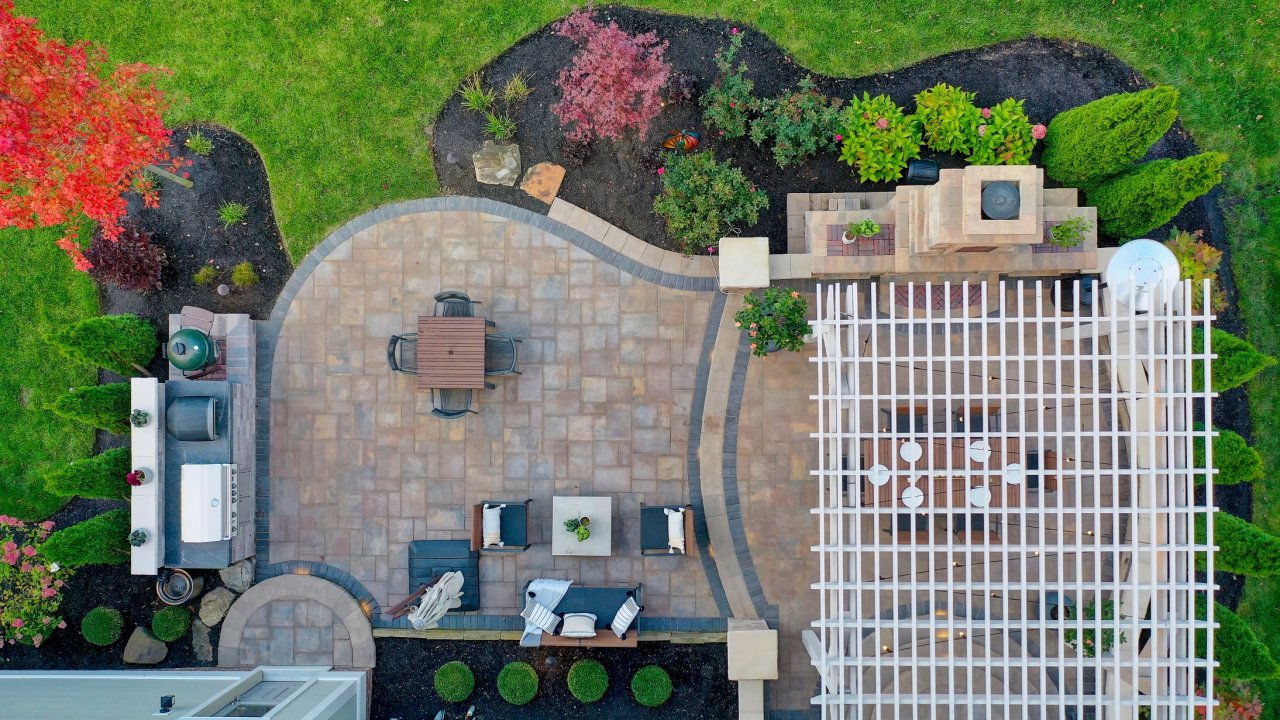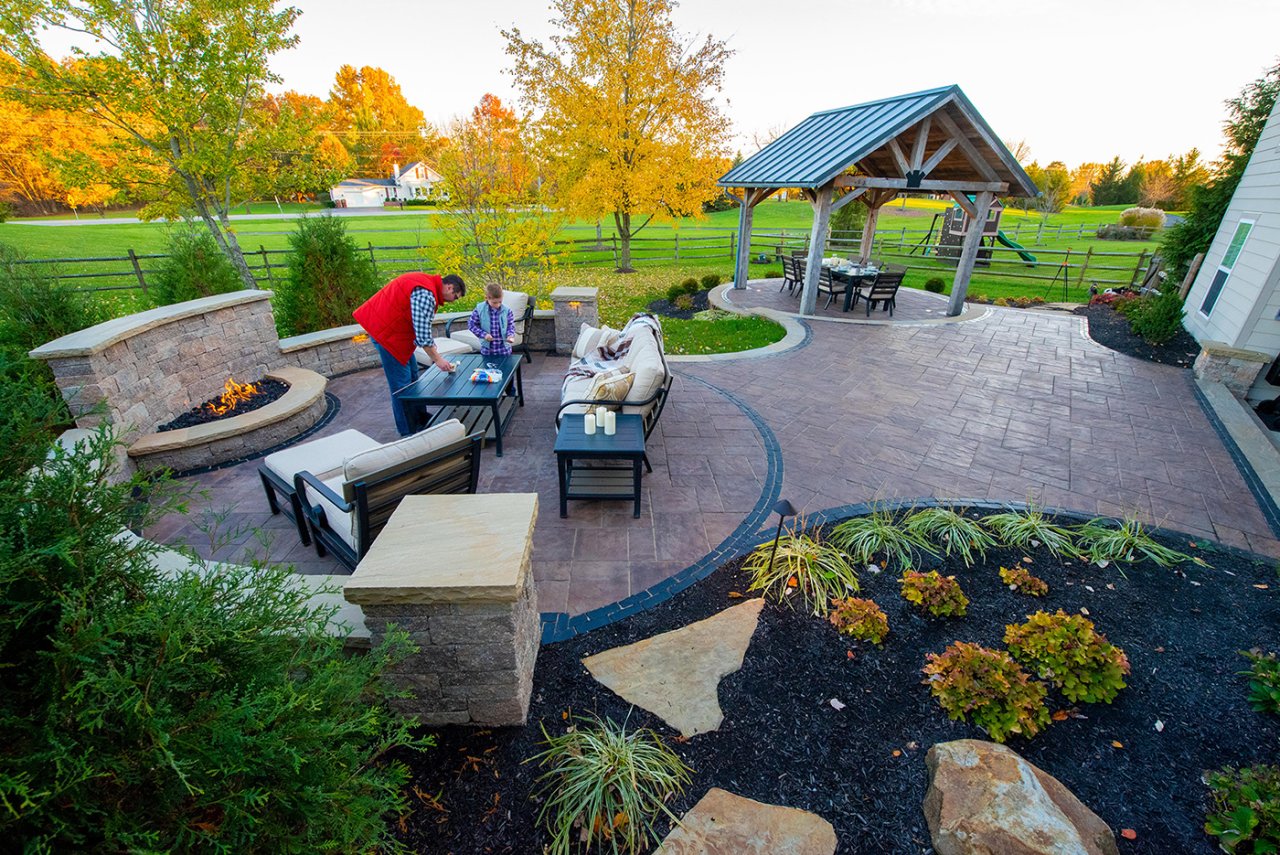
Go Native, Go Green

Go Native, Go Green: Why Ohio Native Plants are Your Best Friend
From the clay soils to the seasonal climate shifts, choosing the right plants is key to creating stunning, sustainable, and thriving landscapes. That's where Ohio native plants come in!
Going native isn't just a trend; it's a smart, eco-conscious choice that offers a wealth of benefits for both you and the local ecosystem. Let's dive into why perennial flowers Ohio, along with native shrubs and trees, are the ultimate secret weapon for your landscaping project.
Why Choose Native Ohio Plants? The Benefits Are Blooming!
Native plants are those that have evolved in a specific region over thousands of years, adapting to their unique climate, soil, and wildlife. For Columbus, this means plants that are inherently suited to our Central Ohio conditions.
Here's why incorporating Ohio native plants into your designs is a game-changer:
Low Maintenance Perennials for Ohio: This is music to every homeowner's ears! Once established, native plants generally require significantly less water, fertilizer, and pesticides than non-native species. They're already adapted to our rainfall patterns and soil conditions, meaning less work and expense.
Drought and Pest Resistance: Because they've evolved alongside local pests and diseases, native plants often have a natural resistance that non-natives lack. Their deep root systems also make them more resilient during dry spells, a huge advantage in Ohio's sometimes unpredictable weather.
Support for Local Wildlife: Native plants are the foundation of our local ecosystem. They provide essential food and shelter for Ohio's native pollinators (bees, butterflies!), birds, and other beneficial insects. Think of a native garden as a vibrant, living ecosystem in miniature.
Monarch Butterflies: Planting milkweed species, like Swamp Milkweed and Butterfly Weed, is crucial for the survival of Monarch butterflies, as their caterpillars exclusively feed on these plants.
Erosion Control & Water Management: Many native plants have extensive root systems that help stabilize soil, prevent erosion, and absorb stormwater runoff. This is particularly beneficial in areas with heavy clay soils, like much of Columbus.
Sustainable and Environmentally Friendly: By reducing the need for chemical inputs and excessive watering, you're contributing to cleaner water, healthier soil, and a thriving local environment.
Top Native Ohio Perennial Flowers for Columbus Landscapes
When it comes to perennial flowers Ohio, the native selection offers a dazzling array of colors, textures, and bloom times, ensuring year-round interest. Here are some fantastic native Ohio flowers that thrive in Central Ohio, including excellent options for full sun perennials for Ohio:
Full Sun Stars for Vibrant Blooms:
Purple Coneflower (Echinacea purpurea): A quintessential prairie flower, this hardy perennial boasts striking purple-pink petals with prominent central cones. It's a magnet for butterflies and bees and is incredibly low-maintenance once established.
Black-Eyed Susan (Rudbeckia hirta): Cheerful and classic, Black-Eyed Susans offer bright yellow petals with dark brown centers. They are exceptionally easy to grow, drought-tolerant, and provide continuous blooms from mid-summer through fall, and their seeds feed birds in winter.
Butterfly Weed (Asclepias tuberosa): As its name suggests, this vibrant orange milkweed is a must-have for attracting butterflies, especially Monarchs. It thrives in dry, sunny conditions and adds a fiery pop of color.
Wild Bergamot (Monarda fistulosa, also known as Bee Balm): This aromatic perennial produces showy clusters of lavender-pink flowers. It's a favorite of hummingbirds, bees, and butterflies, and its foliage has a lovely minty scent. Tolerant of various soils and thrives in full sun.
Blazing Star (Liatris spicata or L. pycnostachya): Tall, striking spikes of purple flowers make Liatris a standout in any garden. It offers a unique vertical element and attracts a wide range of pollinators.
Ohio Goldenrod (Solidago ohioensis): Don't let the "weed" in some goldenrod names fool you! Ohio Goldenrod is a beautiful, late-season bloomer that provides crucial nectar for pollinators as other flowers fade. Its bright yellow plumes add a stunning burst of fall color.
Foxglove Beardtongue (Penstemon digitalis): This elegant perennial features spires of white to pale pink, bell-shaped flowers. It's relatively drought-tolerant and attracts a variety of bees.
Versatile Perennials for Sun to Partial Shade:
Cardinal Flower (Lobelia cardinalis): With its brilliant scarlet-red flowers, the Cardinal Flower is a hummingbird magnet. It prefers moist to wet soils but can tolerate partial sun conditions.
Blue False Indigo (Baptisia australis): This robust perennial forms an attractive shrub-like clump with beautiful blue, pea-like flowers in spring. It's long-lived, drought-tolerant, and enriches the soil by fixing nitrogen.
Wild Geranium (Geranium maculatum): An early bloomer, Wild Geranium produces charming pink to lavender flowers in spring. It's adaptable to a range of light conditions, from full sun to partial shade, and makes an excellent groundcover.
Sweet Joe-Pye Weed (Eutrochium purpureum): A tall, stately plant with large, flat clusters of rosy-purple flowers in late summer. Joe-Pye Weed is a pollinator powerhouse, attracting countless butterflies. It thrives in moist, rich soil but can tolerate some sun.
Garden Phlox (Phlox paniculata): Known for its vibrant flower clusters and sweet fragrance, Garden Phlox comes in various shades of pink, purple, and white. It prefers full sun but can tolerate some afternoon shade in hotter climates like Columbus.
Native Shrubs and Trees for Structural Beauty:
Don't forget the importance of native shrubs and trees for the backbone of your landscape designs!
Eastern Redbud (Cercis canadensis): A stunning small tree that explodes with pink-purple blooms in early spring, before its heart-shaped leaves emerge. A true harbinger of spring in Ohio.
Image ofServiceberry (Amelanchier spp.): Also known as Juneberry, this versatile small tree or large shrub offers white flowers in spring, edible berries in summer (loved by birds!), and striking fall foliage.
Image ofNinebark (Physocarpus opulifolius): A hardy shrub with interesting peeling bark, white flower clusters, and attractive red seed capsules. It provides multi-season interest and dense growth, offering nesting sites for birds.
Image ofWinterberry Holly (Ilex verticillata): A deciduous holly that provides brilliant red berries in winter after its leaves have fallen, offering a much-needed pop of color against a snowy landscape and food for birds.
Image of
Designing with Native Plants in Ohio
When planning your native landscapes locally, consider these tips:
Assess Sunlight and Soil: While native plants are adaptable, understanding the light conditions and soil type (e.g., heavy clay) of your property will help you choose the best species. You can amend heavy clay soil with organic compost to improve drainage.
Layer Your Plantings: Combine taller plants with medium and shorter ones to create visual interest and provide diverse habitats. Think about bloom times to ensure continuous color throughout the seasons.
Create Mass Plantings: Planting groups of the same species can have a more impactful visual effect and also make it easier for pollinators to find them.
Embrace the "Wild" Look: Native plant gardens often have a more natural, informal aesthetic. Encourage your clients to appreciate this beauty and the ecological benefits it provides.
Educate Your Clients: Help your clients understand the value of native plants – from reduced maintenance to supporting local wildlife. This reinforces your expertise and commitment to sustainable landscaping.
By integrating these beautiful, resilient, and ecologically vital Ohio native plants into your central Ohio landscaping projects, you'll not only create stunning outdoor spaces but also contribute to a healthier, more vibrant environment for all. It's a win-win!
See more posts...


Rest Easy with the Proper Fall Clean Up
















